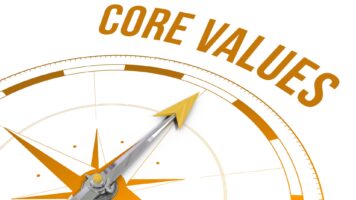Hope is a Strategy

A few years ago I noticed a book ad in the O'Hare airport titled, "Hope is Not a Strategy." I loved the title. To me, it represented the pain and frustration I felt in companies I had worked for, namely if we did enough "stuff" and hoped it would work, it would. The equation of stuff + hope = results never worked, and so I loved and quoted the title.
But I've changed my mind.
Hope is a strategy, but not the only one. While exhaustive homework, imagination and intensity make a difference, for anything worthwhile there will come a time when hope is the only thing to hold onto.
In the Heath Brothers latest book Switch (which ironically I was reading by lantern last night in a midnight power outage, hoping for light and heat to come back), IDEO CEO Tim Brown describes the need for hope for a singular reason: "Foggy periods." Here's how he explains it.
An IDEO designer created a "project mood chart" that's shaped like a U. The beginning of any project is represented by the upper-left of the U, where people feel enthusiasm. At the upper-right of the U, when the project is over, there is confidence (assuming they nailed it). Between the two peaks, at the valley of the U, is what they label "insight," where the real struggle happens because you're caught in the middle of data, countless ideas, and what to do with it all. That's also where you watch many ideas fail. Tim is quoted as saying that design is "rarely a graceful leap from height to height." At the bottom of the U, it's easy to be discouraged and overwhelmed.
That's where hope is a strategy. Without hope, discouragement and fatigue overpower enthusiasm and confidence, and the insight never comes.
For any company or project, it's just not possible to perfectly see the end from the beginning, despite how popular that message is to preach. Bookstore shelves are stocked with messages on "vision" and "mission." I'm not aware of one story, vision or mission that didn't require hope in perplexing and fatiguing moments. I hesitate to say the word "moments" because the very word suggests the bottom of the U lasts minutes or days, not weeks, months or years. And we often don't know for how long the bottom of the U will stretch.
Hope is as important to accomplishing great work as IQ, money and a driving purpose. In the darkest moments, hope may be the only thing you have to hold onto.
Don't let anyone, including the over-analytics or those who imagine they've had it easy (or that it usually is), tell you otherwise. Too many success stories about leaders, organizations and movements are sanitized of the dark moments where hope was all they had, or condensed so that it appears the tough moments are very temporary. It's not true. Don't believe it.
Hope is a strategy, and at the bottom of the U, it may be the most important one.
**********************************************************************
As a gift to readers G5 Leadership Training. is offering 100 free tickets to the April 13th event, Greater Than Yourself. The event will be taught live by bestselling leadership author and speaker, Steve Farber.
To get in free, use this discount code: leadchange
You can register here:
***********************************************************************





Hope is often times the ONLY strategy when working on a project that has its ups and downs, as all projects do. As a project manager, hope was sometimes what we would hang our hats on as we jumped in with sleeves rolled up to bring in a project on a tight deadline, and little sleep.
As a business owner, I know that without hope, I would not continue to put myself forth in growing my fledgling business as a coach. It is often a major amount of work, with little immediate return. My only “hope” is that I am building a following that may someday need my services, and will remember my name as a kind, respectful, thoughtful and collaborative coach.
Meanwhile, I hope that those same character traits give some peace, serenity, and yes, hope, to those I touch.
Great post – and reminds us all that hope is not lost!
Warmly,
Georgia
Someone once said, “Hope is to the soul, what oxygen is to the body.”
When hope is focused on a desired outcome surely it is strong in a support role helping us push through the resistance to find solutions and succeed.
Thanks for your post, Steve!
HA HA HA Reading Switch during a power outage. Love it! You and the Heaths are so right, as they wrote, this is why you put two stamps on the 12 stamp coffee card, instead of 0 stamps on the 10 stamp one. Anything to create that hope. I love your blog title because it challenges that CW of the “Hope is not a Strategy” book of years ago. And you are so right. Go You!
I love the visual image of you reading Switch by lantern light, Steve. The book is that good!
Your post brought to mind my favorite Emily Dickenson quote: ‘Hope is the thing with feathers That perches in the soul And sings the tune without the words And never stops at all.”
Years ago I wrote Winning the Change Game, a story based on my experiences over many years of helping companies implement organization wide initiatives. One of the most important things I learned was to never assume that progress was a straight upward line. Being a change agent is kind of like being a sheep dog — you must always be vigilant, enthusiastic, caring, nudging, filled with hope and optimism, and, occasionally, barking:)
[…] RT @mikehenrysr: Hope IS a Strategy – Today’s #LeadChange post by Steve Smith @G5Leadership http://su.pr/5B0mBz […]